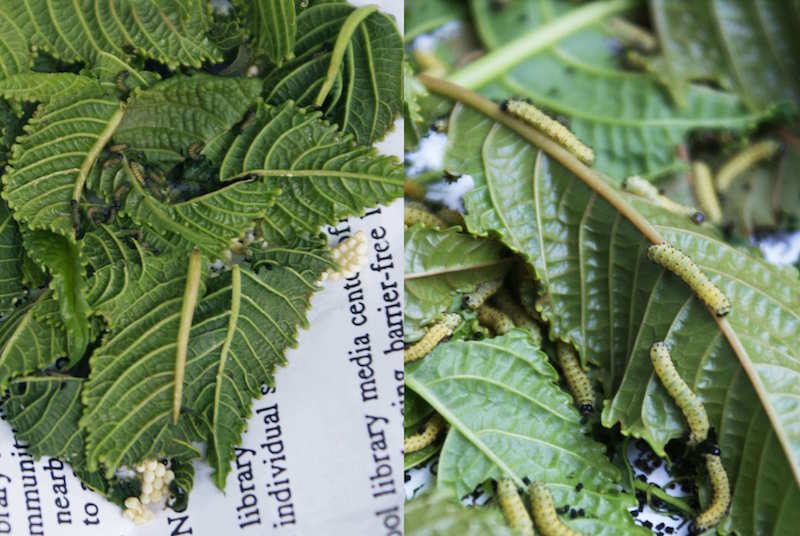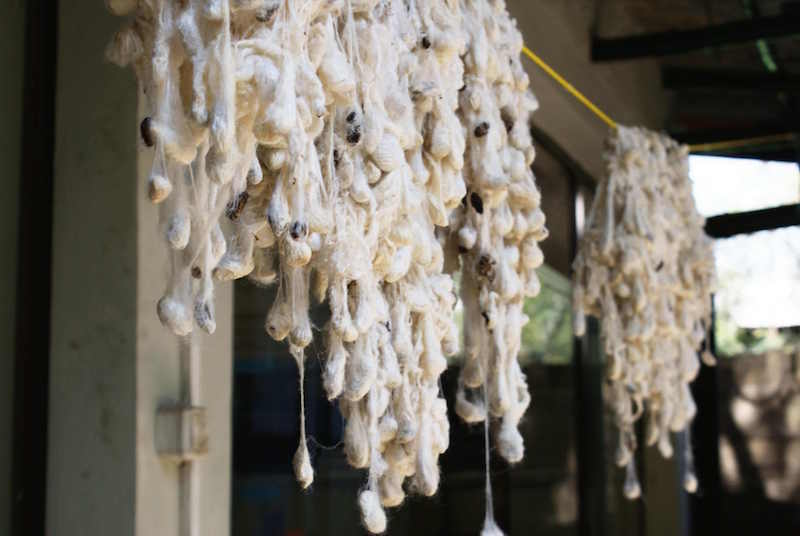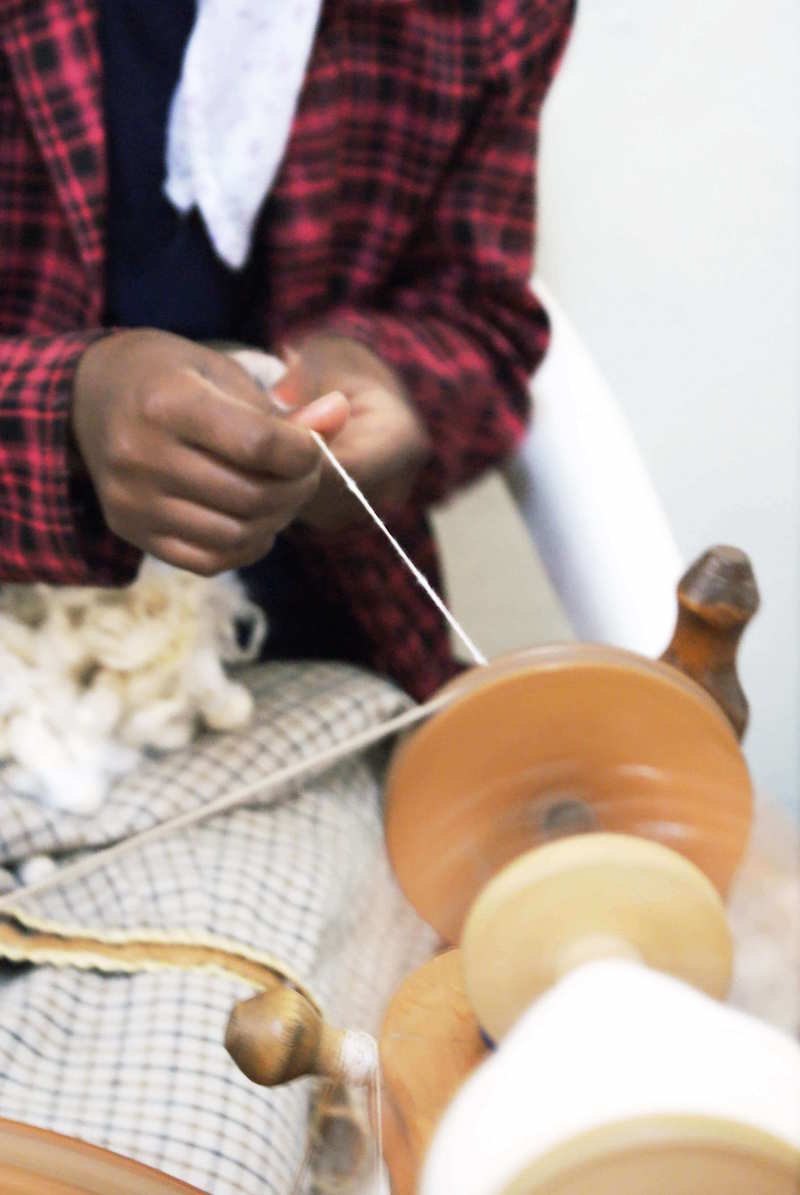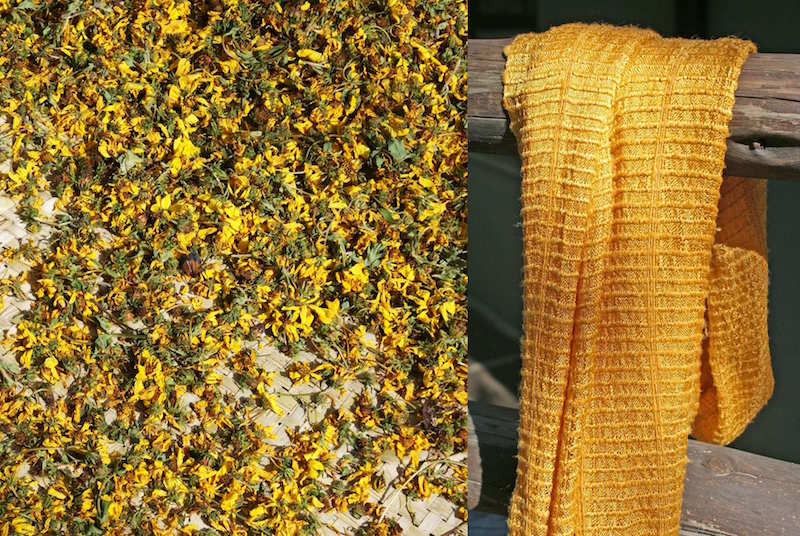Fit For A Queen: Ethiopian Silk Production at Sabahar
Posted on 30 October 2017
The name Sabahar in Amharic (Ethiopia’s national language) consists of two words: ‘Saba’, the infamous Queen of Sheba, who visited King Solomon from Ethiopia; and ‘har’, which means silk. Ethiopian Silk for a queen.
Ethiopia, however, is not famous for its silk production: cotton is the principal fibre that is produced here, and historically people only wove with silk from traded Asian fabrics, which they unravelled and re-wove themselves. There are even so-called “silk caves” in Ethiopia’s Amhara region where the fabric was stashed by the king at the time. But fast forward to the year 2000, and the Ministry of Agriculture made the decision to introduce Eri silk to Ethiopia, and Sabahar has been part of the Ethiopian silk story since the beginning.
For most of us, lustrously fine Mulberry silk provides our mental image of the fibre, as it constitutes 95% of the world’s supply. For centuries it was China’s closely guarded secret until a princess smuggled out some eggs in her headdress on the way to marry a foreign king. The unfortunate reality nowadays is that Mulberry silk caterpillars have been so heavily genetically modified that they are incredibly fragile creatures in need of a tightly controlled environment to thrive, and are therefore expensive and difficult to maintain.
Conversely, Eri silk is a wild silk that hasn’t had quite the same level of human meddling, and the caterpillars (‘silkworm’ is a misnomer!) are stronger and can reproduce more easily. Although not endemic to Ethiopia, the prevalence of the castor plant, their favoured food, makes it the perfect home. The Eri silk cocoon is much more ‘fluffy’ than its Mulberry silk relative and produces a coarser fibre with shorter strands that require spinning to be made into yarn. (Mulberry silk caterpillars produce a single filament that only requires reeling to create yarn).
Every silk caterpillar begins life as a tiny white egg. As soon as it hatches, it’s time to start feeding it castor leaves; the early days, and in fact, the caterpillar’s whole life before metamorphosis involves a lot of eating!

(left) The tiny caterpillars just after they have hatched from their eggs - and already starting to munch… And the caterpillars noticeably bigger after a week or so (right).
After 45 days the caterpillar starts to spin its cocoon. It resides in its cosy abode for about 2 weeks before emerging and unfurling its wings as a fully formed moth. The moths only live for 5 days, in which time they mate and the female lays approximately 200 eggs, ready for the process to begin again.
 (left) The Eri caterpillars soon before starting to spin their cocoons, and (right) an Eri moth soon after emerging from its cocoon, which you can see below it.
(left) The Eri caterpillars soon before starting to spin their cocoons, and (right) an Eri moth soon after emerging from its cocoon, which you can see below it.
To process the cocoons into yarn, they are first laid out in the sun to dry. Then, they are boiled in water to clean off the gum-like substance left behind by the caterpillars. During this process, the silk fibres start to intertwine a little, and they are dried outside in these small bundles. No combing or extra cleaning of the fibre is necessary before the fibre is spun.


The black blobs you can see in the photo are actually the dried pupae inside the cocoon. Eri silk can be a peace silk (a type of silk that does not require the caterpillar to die in the process), but Sabahar has found that this approach is very difficult to maintain. With their rural extension programme, Sabahar purchase silk cocoons from farmers in the South of Ethiopia, who often start producing silk to supplement their income from agriculture. Sabahar has trained their producers to keep back enough cocoons to propagate the next cycle of production and to dry the rest ready for hassle-free transport to Addis Ababa.
(In Assam, India, Eri silk’s homeland, the caterpillars are actually an indispensable protein source for the local people, and are eaten freshly cooked or ground into a powder to be added to different recipes. They were centuries ahead of the new let’s-eat-bugs trend!)

After being spun, the beautiful new yarn is woven into shawls, scarves and throws. Here you can see one of the many beautifully finished Sabahar scarves, made of 100% Ethiopian Silk, dyed a sunshine yellow using meskal flowers; the national flower of Ethiopia that blooms annually around this time. Sabahar dries the flowers in great quantities to use as a dyestuff throughout the year.
 Meskal flowers drying in the sun ready for dyeing, and the beautiful golden yellow shade that they produce on hand-spun silk.
Meskal flowers drying in the sun ready for dyeing, and the beautiful golden yellow shade that they produce on hand-spun silk.
The Ethiopian silk story is still in an early chapter, but the great success so far is that it has generated numerous jobs - especially for women, who complete most of the labour-intensive spinning. All the women who work for Sabahar are now guaranteed fair and reliable work that may not have been available to them before. For me, that is something to celebrate, even if there aren’t many queens stopping in to buy.
© All photos via Ruth Hepburn



0 comments